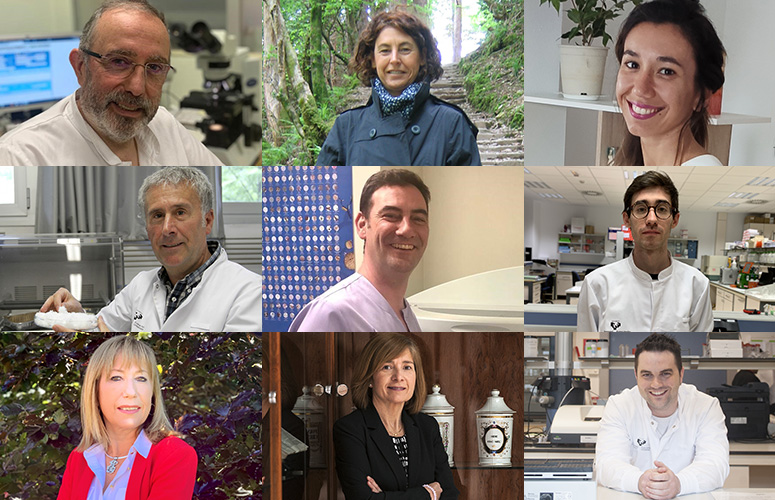Sustainable biomedical device for use in regenerative medicine
First publication date: 03/07/2020

UPV/EHU researchers have developed a biomedical device consisting of by-products from the food industry and which displays excellent properties for use in regenerative medicine. The work has been published in the June issue of Green Chemistry, one of the most prestigious international journals in chemistry and the second most important one in the field of sustainable science. The work has also been selected for the cover page of this issue.
Researchers in the UPV/EHU’s NanoBioCel and Biomat groups have developed a biomedical device consisting of by-products from the food industry and which displays excellent properties for use in regenerative medicine. The novel device comprises soy protein and chitin, which form a matrix with a porous, interconnected microarchitecture similar to that of certain body tissues.
Added to the growing need in recent years to develop new therapies for biomedical applications is the widely called-for social requirement to be environmentally friendly. In this respect, the group of researchers has shown that natural by-products from the food industry, normally discarded in industrial processes, could be an excellent source of biomaterials for producing biomedical devices.
“It is important to point out that to date no one has exploited the potential in regenerative medicine displayed by soy protein and chitin blended in a microporous matrix,” stressed the researchers. “As the first milestone in this respect, this novel device incorporates two natural components obtained from the food industry, thus contributing towards the widely called-for social requirement to upgrade waste from production on an industrial level. The device has also displayed some physico-chemical and mechanical properties suitable for applications in regenerative medicine. What is more, it has also been found to be totally biocompatible not only in in vitro cell lines but also in an in vivo murine model. Finally, we have confirmed that this device is capable of hosting a large number of viable stem cells inside it, thus increasing its level of bioactive compound secretion and displaying its potential as a very effective vehicle in cell therapy.”
This biotechnological approach may have a potentially successful application in the matrix-based regenerative medicine industry. These devices capable of hosting stem cells are destined to be the revolution, not only in biomedical research but also in everyday clinical practice. “Clinical scenarios as complex as chronic injuries or bone problems need a multifocal approach which combines bioactive matrices with biological agents having regenerative effects,” they concluded.
This work was also selected for the cover page of the June issue of the journal Green Chemistry, one of the most prestigious journals worldwide in the field of chemistry. The cover page was designed by Mario Arpón.
Additional information
NanoBioCel is a research group attached to the UPV/EHU’s Pharmacy and Pharmaceutical Technology Laboratory and is also a member of CIBER-BBN (Networked Biomedical Research Centre for Bioengineering, Biomaterials and Nanomedicine) and of the singular scientific and technical infrastructure Nanbiosis-ICTS.
BIOMAT is a multidisciplinary group made up of lecturers and researchers in the department of Chemical Engineering and the Environment, Applied Physics, Business Administration and Applied Mathematics of the UPV/EHU. The BIOMAT group works in the area of renewable, biodegradable materials for a range of applications, mainly as food containers and for regenerative medicine.
Bibliographic reference
Kevin Las Heras, Edorta Santos-Vizcaino, Tania Garrido, Francisco Borja Gutiérrez, José Javier Aguirre, Koro de la Caba, Pedro Guerrero, Manoli Igartua y Rosa María Hernández.Soy protein and chitin sponge-like scaffolds: from natural by-products to cell delivery systems for biomedical applicationsGreen Chemistry (Junio 2019)DOI: 10.1039/D0GC00089B



